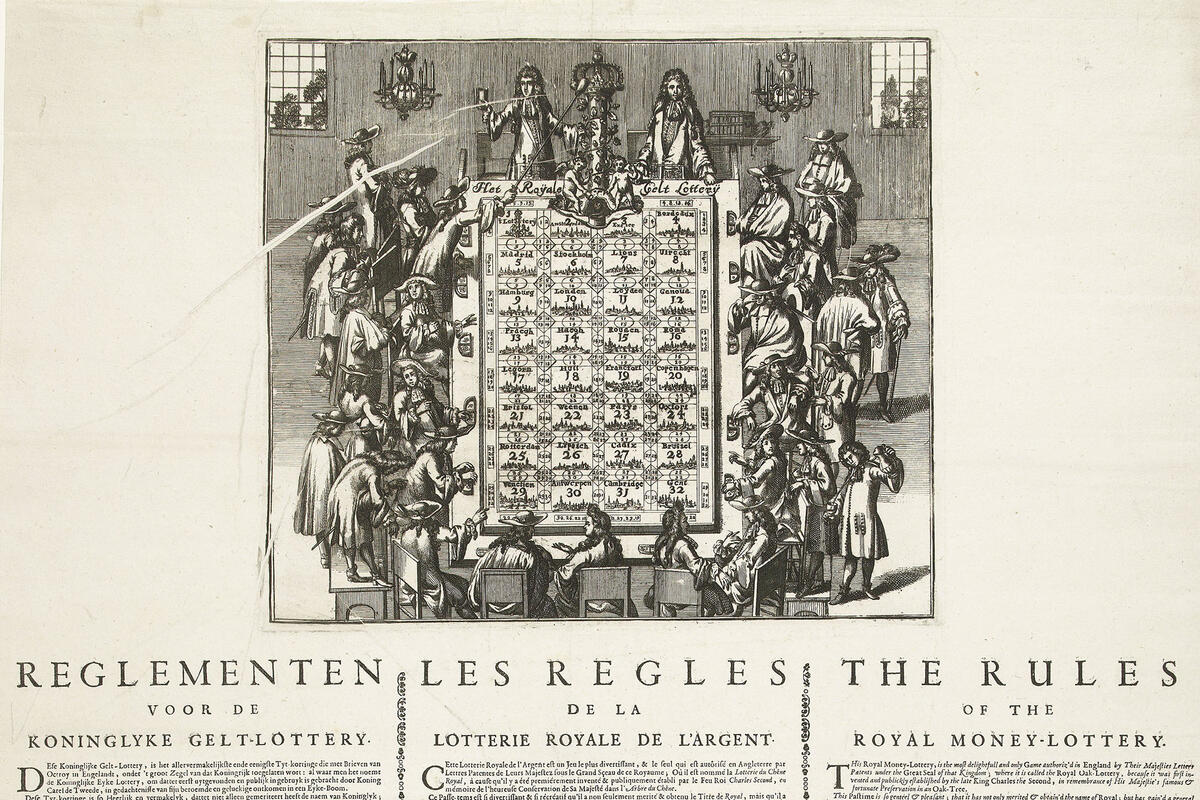The project that brings me to UNLV’s Center for Gaming Research traces the emergence of gaming as a commercial venture in England from the Restoration to the Regency. The Royal Oak Lottery was the earliest commercial gaming venture in the British Isles. It was not a lottery as we understand that today, but something more akin to a casino game like roulette. It was derived from a game of Catalan origin called L’Oca, or The Goose. It was played in France by 1659, when it was described as L’Hoca de Catalogne in an edition of a standard tract on rules of games of which the Special Collections Department of the Lied Library has an extensive run. Special Collections’ early modern holdings describe and illustrate iterations and adaptations of this and similar games. Derivatives of these games of chance, which were played with colorfully decorated boards, have survived into our own times. Loteria, a cultural touchstone in Latin America and its diasporan communities, is a prime example.
Italian and French emigrants attached to the Restoration court introduced L’Oca di Catalonia and its variants into England soon after their arrival, and received royal patents enabling them to lease concessions for the commercial operation of these games at fairs and resorts. The Royal Oak was the most popular adaptation, commemorating the Boscobel Oak in which the exiled king had hidden after the Siege of Worcester in 1651. The game figured prominently in the works of probability writers, who noted the ludicrously steep advantage that Royal Oak operators enjoyed. It was played with a polyhedral die, the “teetotum,” with 32 numbered faces. Players were confined to staking on four numbers at most, and payouts on winning stakes were significantly less than mathematical odds would have dictated. The Royal Oak proved to be so profitable that senior government officials moved quickly to leverage a share of the proceeds. Courtiers who obtained patents for the Royal Oak or similar games would sell these concessions for a lump sum, only to promote other “board lotteries” under different names. This dynamic, involving slight variations in games to evade the language of patents, or subsequently of statutes, would bedevil efforts to regulate commercial gaming ventures in the British Isles throughout the long 18th century.
The Royal Oak was an important gaming prototype in two respects, as it introduced the concept of an organized gaming syndicate that operated “banks,” and introduced the Crown as an agency bestowing legitimacy on otherwise shady enterprises. Both developments were critical to the proliferation of commercial gaming in metropolitan London and its satellites, and in different ways complicated efforts to regulate, contain, or proscribe it.
The Eadington Fellowships program, sponsored by the Center for Gaming Research in Special Collections & Archives, funds scholarly research into our collections on gaming and Las Vegas. Fellows conduct research, present a public talk, and write a brief paper that becomes part of the Center's Occasional Papers series. Application information, as well as links to podcasts of the public talks and the papers can be found on the Center for Gaming Research website.



